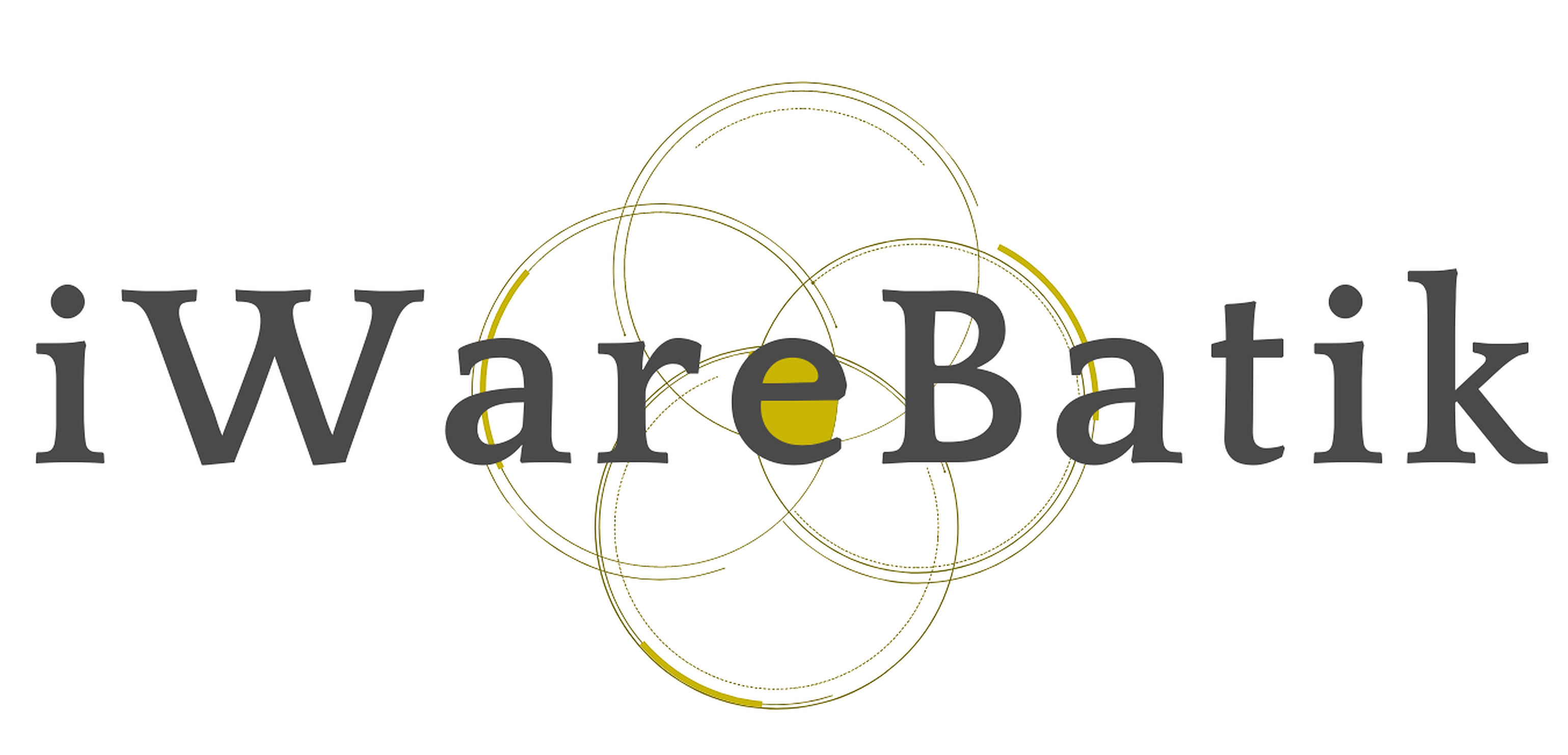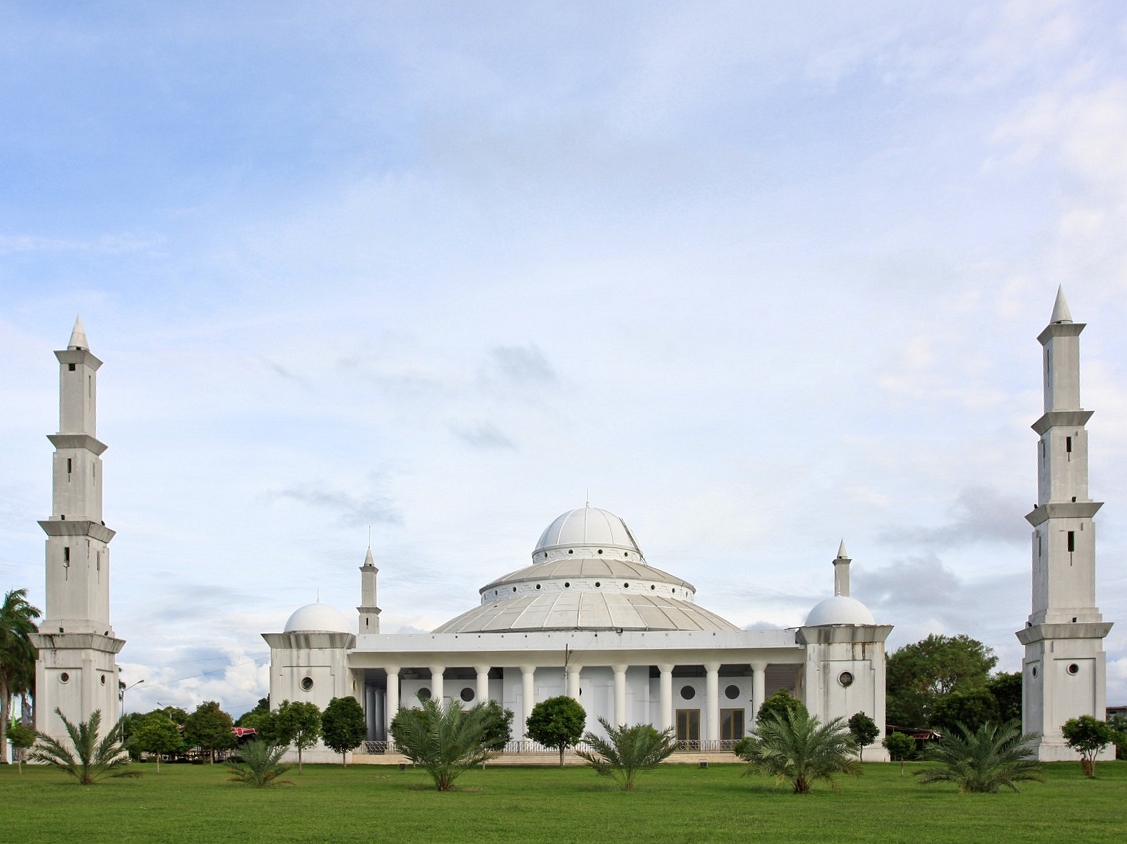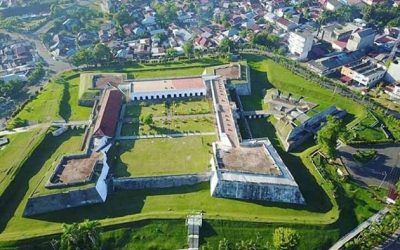Home / Batik Regions – Western Indonesia – Southern Sumatra – Bengkulu / At Taqwa Grand Mosque
Cultural Destination
Embrace the spirit of the place!
At Taqwa Grand Mosque
Bengkulu also offers spiritual tourism with historical nuances. One of the famous mosques in this region is the Grand Mosque of Akbar At-Taqwa Bengkulu. This colonial-styled mosque is located near the home of the first President of Indonesia, Sukarno, when he was exiled during the Dutch colonial era. Its park is quite spacious and designed with a vintage and classic style with a garden in the courtyard of the presidential palace.
Tourist Attractions in Bengkulu
Tabut Festival
Bengkulu regional government holds annual the Tabut Festival that takes place in
Fort Marlborough
Fort Marlborough in Bengkulu was once built by the British colonial era during
Bengkulu
Batik Motifs
Besurek Rembulan
This batik illustrates praise for God who created the wonderful universe
Besurek Rafflesia
The term “Basurek” refers to a textile that contains letters or inscriptions
Kaganga Tanah Rejang
If Batik Besurek combines Arabic calligraphy motifs, then the Kaganga batik takes
Discover
Indonesian
Batik
Motifs
Bomba Mawar
This motif means sacred love for family, kingdom, and God; It also illustrates
Dayak Kamang
Kamang motif is generally found in the Dayak tribe shield because it is believed to
Biji Kopi
The coffee seeds motif illustrates the pride of local coffee specialities in
Gorga Simeol-Meol
The Gorga Simeol-meol is a pattern of plant tendrils. it is regarded as a symbol of longevity and
Kuda Kupang
Horses symbolize wealth. It contains noble values of virtuous characters that bring
Gonggong Beruntun
This motif illustrates that a person should maintain a positive attitude and
Gonggong Siput
Gonggong (Strombus Turturella) is one type of sea snail found around
Tenun Bima
The motifs are adopted from Bima woven textile. This pattern has received a great
Salakanagara
Salakanagara batik motif illustrates the first kingdom in the Betawi land
Pohon Hayat (Tree of Life)
The Batik motifs in Lampung are dominated by the acculturation of Buddhist and
Kaganga Tanah Rejang
If Batik Besurek combines Arabic calligraphy motifs, then the Kaganga batik takes
Besurek Rembulan
This batik illustrates praise for God who created the wonderful universe
Rangkiang
The word “Rangkiang” refers to the rice granary in the Minangkabau language. It symbolizes
Teguh Bersatu
This batik motif shows the strength of the people of Kupang. It also represents a sense of
Ikan tambal
The word “Ikan” refers to fish. The philosophical meaning of Ikan Tambal means is
Sekar Jati
Sekar means flower and Jati refers to teak trees that symbolizes a strong mental character that
Besurek Rafflesia
The term “Basurek” refers to a textile that contains letters or inscriptions
Paqbarre Allo
The word “Barre” means round and “Allo” means the sunlight. This motif is interpreted as
Lok Baintan Floating Market
As you can imagine, the most authentic thing is that you can buy things and even
Kaharingan
The Kaharingan or ‘tree of life’ based on the Dayak tribes’ belief system. This tree symbolizes
Gamolan
This motif illustrates Gamolan, a bamboo musical instrument of Lampung that is
Singayaksa
The Singayaksa motif comes from the name of a place where Sultan Hasanuddin used to
Parang Seling
Parang Seling or “alternating daggers” is a royal batik motif. It is a feminine variant of
Srimanganti
The name of the Srimanganti motif is derived from Palace’s hallway that connects to
Lontara
The Lontara script itself is a typical ancient script of Bugis and Makassar communities. History records that
Bintik Tujuh
The Bintik Tujuh (Seven Dots) motif has 7 white spots and green color gradation as
Sandeq
Sandeq Boat is a symbol of the maritime importance of the West Sulawesi region. The greatness of
Pattimura
Pattimura is the name of an Indonesian hero who fought against colonialism in
Bale Lumbu
This motif signifies the welfare of the ancient Sasak society. Bale also symbolizes the
Awan Berarak
Awan Berarak is a combination of Dayak motifs and Malay patterns. The word ‘Awan Berarak’ means the
Raja Ampat
Raja Ampat motif represents the marine life at Raja Ampat archipelago in
Keluak Daun Pakis
The word “Keluak” is a Minang language which means twisted or tangled. The Motif of
Gentala Arasy
Built as high as 80 meters, the tower also highlights the historical side of
Burung Bidadari
Bidadari birds are endemic birds in Halmahera. This motif represents an
Pinawetengan
The Pinawetengan Batik pattern was taken from a prehistoric inscription in
Daun Lada Hitam
The black pepper motif represents the main commodity of Bangka Belitung
Tifa Totobuang
The batik motifs illustrate Maluku’s traditional music instrument called
Malinau Cultural Festival
You will witness a unique competition that might not be found other than in
Gumin Tambun
Based on Hindu mythology, this motif symbolizes lucks, abundant wealth, and
Tangerang Herang
Tangerang Herang motif is a symbol of Tangerang city. The Tangerang Herang batik motif consists of
Sido Mulyo
Sidomulyo is one of the classical motifs, which is specifically used for the bride’s costume in
Gajah Way Kambas
The motif illustrates the Lampung’s natural reserve, the Way Kambas. it also symbolizes
Karawo Pinang
Pinang refers to the Palm areca tree. This motif is considered as the original
Insang Ikan
Insang refers to the gills of the fish. This is a typical pattern of Malay ethnic who inhabits
Gurdo Solo
Gurdo or garuda bird is the mount of the Indian god Vishnu. As the Sun Bird,
Pala Salawaku
This motif illustrates the unique weapons of the Maluku region, namely
Sero Tangga
The Sero Tangga illustrates an endearing feeling and sacrifices of a person to fulfil
Leuit Sijimat
This motif reflects the daily activities of the Baduy tribe in Banten. The main ornaments of batik motif consist of:
Bekantan Pakis
This motif represents Pakis Haji (Polystichum setiferum), an endemic plant in
Desa Na Tolu
The Desa Na Tolu characteristic pattern symbolizes the Batak philosophy of existence and
Honai
The Honai is inspired by the traditional house of the Papuan community living in
Tikar Natuna
The Tikar Natuna motif is adapted from the traditional making of pandanus mats in
Cengkeh
The clove flower motif is the main commodity of the Tolitoli Regency. This motif represents
Gigi Haruan Lidi
The Gigi Haruan Lidi motif is taken from the name of the cork fish and is a symbol of
Lipaq Sabe
Lipaq Saqbe contains a simple geometric classical motif with various flower decorations. This textile is
Hiu Taliyasan
Indonesia is also home to the world’s largest fish, the whale shark (Rhincodon typus). Hiu Taliyasan refers to
Tampuk Manggis Sasirangan
The motif illustrates the philosophy of the mangosteen fruit, which is
Tongkonan
Toraja’s traditional house is called Tongkonan. Tongkonan is a place for
Kerawang Tegak Aceh
The Vertical Upright (Kerawang Tegak) Motif symbolizes a person who has a strong
Daun Sirih
This motif illustrates betel leaves that are used by Lombok communities as traditional
La Galigo
La Galigo is a literary work of the Buginese Epic that has 300 thousand epic lines. It is considered even
Jumputan Bintang
The word Jumputan means the tie-dye technique, while the word “Bintang” refers to
Gedhog Kembang Waluh
a combination of Javanese cultural motif of the Majapahit kingdom (XII-XIV century) with
Enggang Dayak
Local people beliefs that hornbills are an incarnation of the Commander of the Birds. It has supernatural
Bultiya
The word ‘Bultiya’ is an acronym of the three major tribes in North Kalimantan, namely
Daun Simpor
This motif is inspired by the Simpor plant (Dillenia Suffruticosa) which is a typical
Mahkota Siger
Siger is the crown of a noblewoman in ancient time. It is a symbol of femininity, strength, and
Ukir Sentani
The Ukir motif is a batik motif that is inspired by various traditional Sentani wood carvings
Ake Patra
Ake is related to the divinity and the composition of the universe. It is a symbol of
Kain Cual
Cual textile tradition has existed since the 17th century. The word “Cual” refers to
Dayak Taghol
Dayak Taghol has a distinctive style of four curved lines and small dots. This motif represents
Parang Rusak
Another meaning behind this motif is an unconquerable spirit, symbolized by





